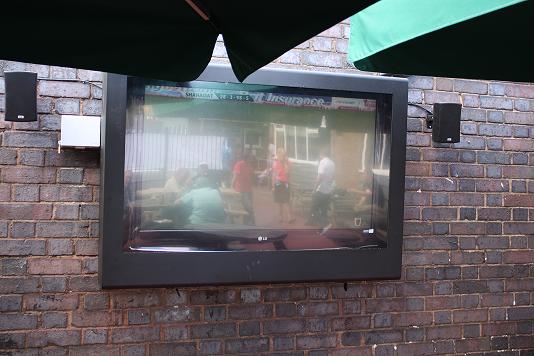Outdoor Digital Signage appropriate Brightness Levels
Posted by: Richard Williams | Posted on: | 0 Comments
Outdoor digital signage posses many challenges; with screens exposed to the elements, protection against the weather, temperature and physical impact is essential for any outdoor display. Failure to provide adequate protection can lead to screen failure, costly replacements and screen downtime.

Sunlight can make outdoor digital signage unreadable
Another aspect to outdoor digital signage that poses problems is the getting the appropriate brightness level required for an outdoor screen. Unlike indoor environments, outdoor screens have occasionally to cope with extremely high levels of ambient brightness, particularly in the summer when bright sunlight can overpower a screen and make it unreadable.
The brightness of LCD and plasma screens is measured in units called candela (often referred to as nits). This unit of measurement is based on the brightness of a candle, with a single candle having a luminosity of 1 candela (candela is Latin for candle). The average LCD or plasma screen used around the home for watching TV has a luminosity of 400 to 500 candelas, perfectly adequate enough for indoor environments. However, on a bright, sunny day, you may have noticed that if the sun is shining through the window onto the TV screen, the TV becomes difficult to see, forcing you to close the curtains.
This problem is caused by the brightness of the sun, bearing directly onto the screen, overpowering the screen’s own brightness and making it unreadable. Of course, for outdoor digital signage there is no handy curtain that can be pulled to shield the screen from the power of the sun, so any outdoor screen has to have a high enough level of brightness to cope with the sun’s luminosity.
Fortunately, many manufacturers of LCD and plasma screens produce high brightness varieties. Typically these have candela ratings three to four times higher than standard screens with a typical high brightness TV emitting a brightness of 1,500 candelas. This is normally adequate to cope with the brightness of the sun, but it does have certain disadvantages.
LCD screens generate their brightness using a backlighting system, typically fluorescent tubes. A high brightness screen will, therefore, require far more power to generate the screen image than a standard screen, increasingly the running costs of the outdoor screen. However, modern, low energy LCD screen that use powerful LED (light emitting diodes) can generate as much brightness as fluorescent screens and use far less power–they also have a longer life, which has further cost savings as the screen will last longer.
Another problem for outdoor digital signage caused by the sun, which can’t be countered by a high brightness screen, however, is readability problems caused by sun glare. Glare is caused when the screen is facing the sun’s path in the sky, so southern facing screens (in the northern hemisphere) can often suffer glare. To counter this problem, angling the screen away from the direct path of the sun is one solution, another is to use an anti reflective coating or glass to cover the screen. This will, however, reduce the luminosity of the screen, so it is imperative that the screen has an extremely high candela rating as possible.
Post shortlink:
Popular Products
LCD Enclosure
Need armor for your LCD/LED screen(s)? Outdoors or inside the versatile LCD enclosure protects against thieves, vandals & the weather. Installation idea: NFL stadiums.
Outdoor Digital Signage
Exclusive 46” outdoor screen protection. Dubbed the ‘Totem’, due to its distinct design, it repels damage threats, but attracts audiences. Installation idea: Drive-thru restaurants.
Portrait Flat Panel Enclosure
Safeguard your eye-level advertising display screen(s), indoors or outdoors. Completely customizable, add exciting features like touch screen technology. Installation idea: Restaurant frontages.
Indoor Digital Signage
Popular purchase for retail outlets! Great for ‘point of sale’ persuasion, boost your brand with static & motion advertising from a single unit! Installation idea: Mall of America.




